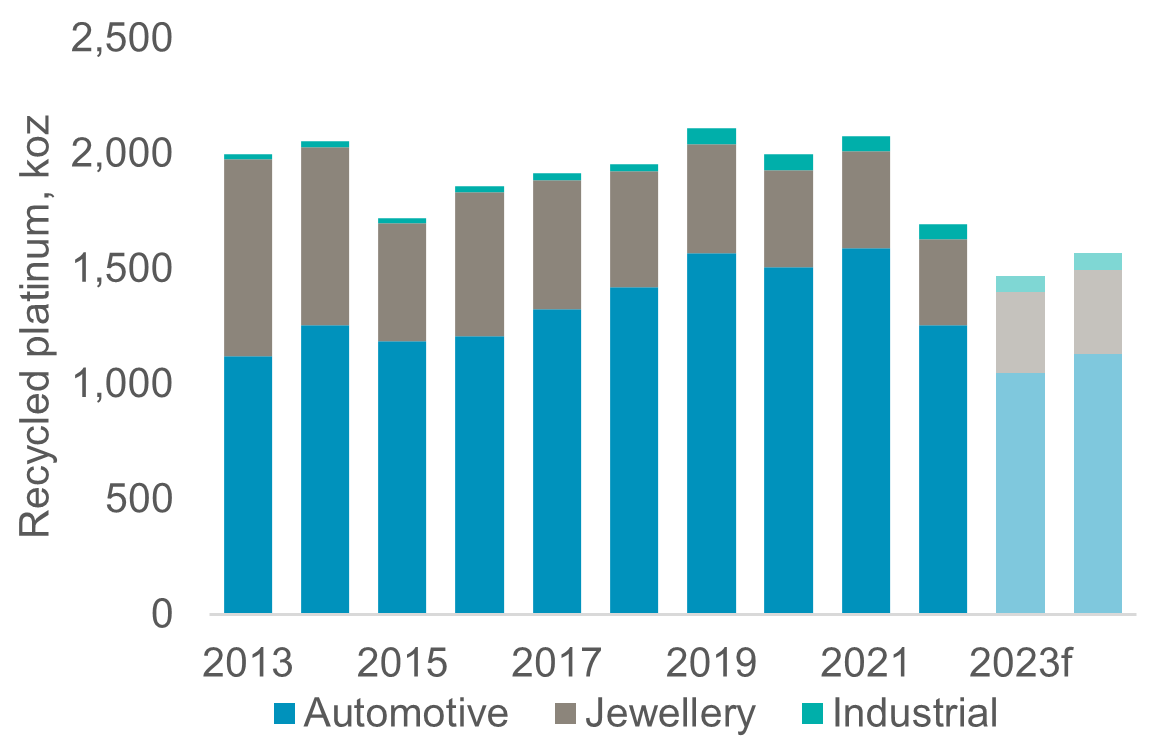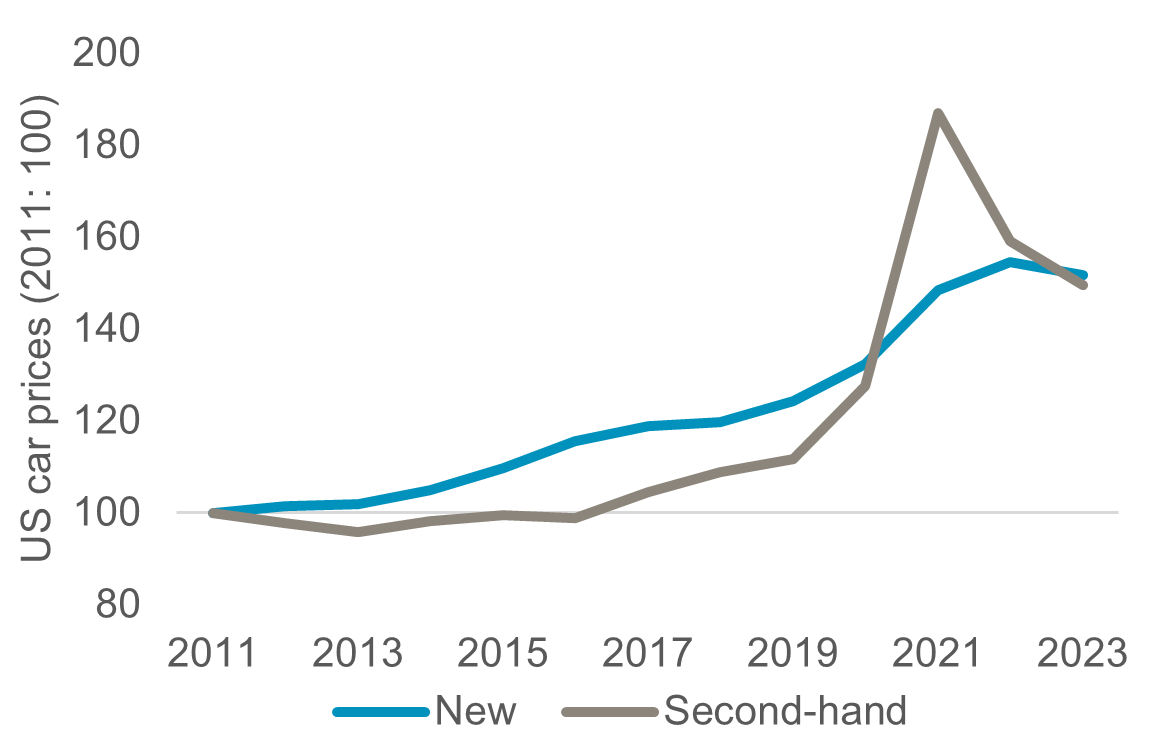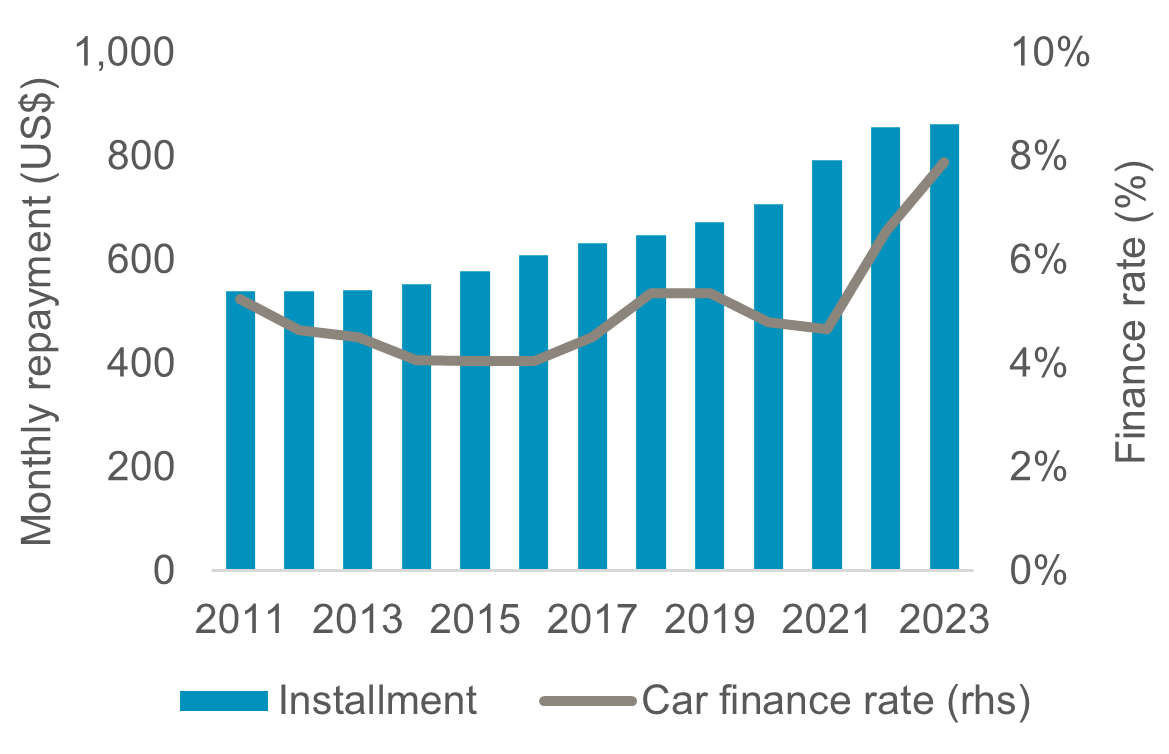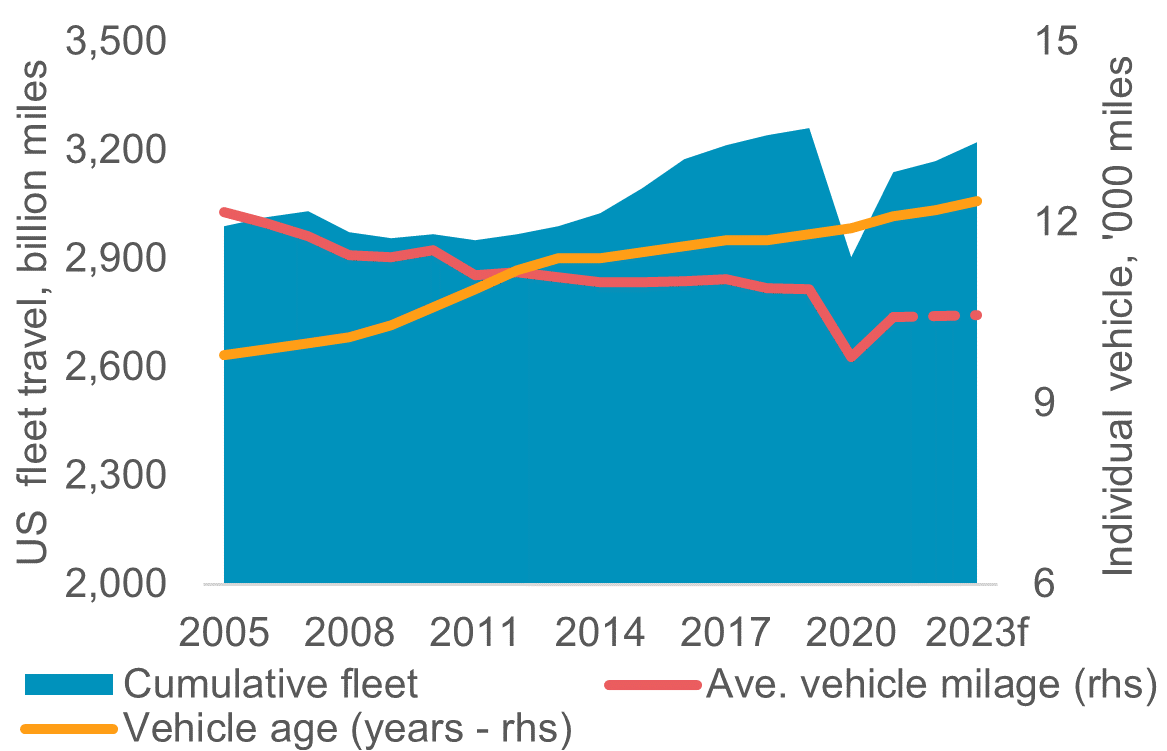Sustained recycling challenges could deepen platinum supply-demand deficits
7 December 2023
Factors constraining autocatalyst supply suggest that challenges previously deemed short-term may be multi-year considerations. In our latest Platinum Quarterly (link), recycled platinum supply increases 7% year-on-year in 2024. However this is 17% below the ten-year average, and if recycling rates remain constrained projected platinum deficits from 2025-2027 could deepen by ~300 koz p.a.
Platinum recycling supply remained consistent between 2013 to 2021 (fig. 1), averaging just shy of 2 Moz p.a. The trends during that period were increasing automotive recycling offsetting declining jewellery recycling. Shrinking jewellery recycling stems from lower platinum jewellery demand resulting in fewer trade-ins (fig. 4). Increasing automotive recycling was a function of the end-of-life vehicles being scrapped having progressively higher PGM loadings due to historical tightening of emissions limits. However, since 2022, there has been a major cut to automotive recycling.
Lower scrap automotive supply was initially attributed to suppressed new vehicle production due to disruptions associated with COVID and the semiconductor shortage as a lack of new vehicles was forcing consumers to run old vehicles for longer. However, new LV production has now recovered from sub-80M units in 2020 and 2021 to almost 90M units this year (projected), and yet automotive recycling supply has continued to shrink. We ascribe lower recylcing rates to three factors.
Automotive is weighing on recycled platinum supply
_249405.png)
Vehicles are taking longer to reach the scrapyard
_118845.png)
1) Lifestyle shifts with the emergence of work-from-home practices have reduced annual vehicle milage by ~5% (fig. 7). 2) Vehicle affordability has deteriorated. WPIC estimates car repayments have increased 22% since 2020 (fig. 6) following US interest rates hikes (190bps YTD) and higher car prices (new and second-hand car prices are >20% higher than in 2020). Extended vehicle ownership defers catalysts reaching the scrapyard for recycling. PGM recycling rates as a ratio of secondary supply over historic demand have increased steadily (fig. 2) until 2022 and beyond where the ratio has sharply receeded. However, if vehicle ownership is extended by one to two years due to lifestyle and affordability factors, the recycling ratio no longer materially deviates from the historic trend. 3) A 40% YTD decline in PGM basket prices (fig. 8) could defer the supply response with recyclers reportedly hoarding spent catalysts in hopes of higher prices.
The circularity of PGMs supports metal returning to the market. However, should automotive recycling rates not recover and stabilise at 2024 levels, platinum supply could be reduced by 900 koz between 2025f to 2027f. This accentuates platinum supply-side risks and market deficits. Furthermore, Palladium markets could take longer before entering surplusses.
Platinum’s attraction as an investment asset arises from:
- WPIC research indicates the platinum market entering a period of consecutive deficits from 2023.
- Platinum can be considered a proxy for investing in the growing hydrogen economy given its use in electrolysers and fuel cells.
- Platinum supply remains challenged, hampered by electricity shortages in South Africa and sanctions against Russia
- Automotive platinum demand growth should continue due principally to substitution in gasoline vehicles.
- The platinum price remains historically undervalued and significantly below both gold and palladium.
Lower end-of-life vehicle supply is supressing secondary platinum supply between 2022 to 2024f

Platinum jewellery recycling has slowed on wider trade-in spreads and broader price depreciation

Despite some easing in 2023, both new and second-hand car prices are >20% higher than in 2020, both in the US and other geographies

Monthly car repayments have increased by 22% since 2020 due to higher interest rates and underlying car prices

Vehicle age growth has accelerated with changing consumer behaviours such as work-from-home reducing annual milage by 5%

Declining palladium and rhodium prices have lower PGM basket prices ~40% YTD leading to some hoarding of catalysts for potential future price rises

IMPORTANT NOTICE AND DISCLAIMER: This publication is general and solely for educational purposes. The publisher, The World Platinum Investment Council, has been formed by the world’s leading platinum producers to develop the market for platinum investment demand. Its mission is to stimulate investor demand for physical platinum through both actionable insights and targeted development: providing investors with the information to support informed decisions regarding platinum; working with financial institutions and market participants to develop products and channels that investors need.
This publication is not, and should not be construed to be, an offer to sell or a solicitation of an offer to buy any security. With this publication, the publisher does not intend to transmit any order for, arrange for, advise on, act as agent in relation to, or otherwise facilitate any transaction involving securities or commodities regardless of whether such are otherwise referenced in it. This publication is not intended to provide tax, legal, or investment advice and nothing in it should be construed as a recommendation to buy, sell, or hold any investment or security or to engage in any investment strategy or transaction. The publisher is not, and does not purport to be, a broker-dealer, a registered investment advisor, or otherwise registered under the laws of the United States or the United Kingdom, including under the Financial Services and Markets Act 2000 or Senior Managers and Certifications Regime or by the Financial Conduct Authority.
This publication is not, and should not be construed to be, personalized investment advice directed to or appropriate for any particular investor. Any investment should be made only after consulting a professional investment advisor. You are solely responsible for determining whether any investment, investment strategy, security or related transaction is appropriate for you based on your investment objectives, financial circumstances and risk tolerance. You should consult your business, legal, tax or accounting advisors regarding your specific business, legal or tax situation or circumstances.
The information on which this publication is based is believed to be reliable. Nevertheless, the publisher cannot guarantee the accuracy or completeness of the information. This publication contains forward-looking statements, including statements regarding expected continual growth of the industry. The publisher notes that statements contained in the publication that look forward in time, which include everything other than historical information, involve risks and uncertainties that may affect actual results. The logos, services marks and trademarks of the World Platinum Investment Council are owned exclusively by it. All other trademarks used in this publication are the property of their respective trademark holders. The publisher is not affiliated, connected, or associated with, and is not sponsored, approved, or originated by, the trademark holders unless otherwise stated. No claim is made by the publisher to any rights in any third-party trademarks
WPIC Research MiFID II Status
The World Platinum Investment Council -WPIC- has undertaken an internal and external review of its content and services for MiFID II. As a result, WPIC highlights the following to the recipients of its research services, and their Compliance/Legal departments:
WPIC research content falls clearly within the Minor Non-Monetary Benefit Category and can continue to be consumed by all asset managers free of charge. WPIC research can be freely shared across investment organisations.
- WPIC does not conduct any financial instrument execution business. WPIC does not have any market making, sales trading, trading or share dealing activity. (No possible inducement).
- WPIC content is disseminated widely and made available to all interested parties through a range of different channels, therefore qualifying as a “Minor Non-Monetary Benefit” under MiFID II (ESMA/FCA/AMF). WPIC research is made freely available through the WPIC website. WPIC does not have any permissioning requirements on research aggregation platforms.
- WPIC does not, and will not seek, any payment from consumers of our research services. WPIC makes it clear to institutional investors that it does not seek payment from them for our freely available content.
More detailed information is available on the WPIC website:
https://www.platinuminvestment.com/investment-research/mifid-ii
Contacts:
Edward Sterck, Research, [email protected]
Wade Napier, Research, [email protected]
Jacob Hayhurst-Worthington, Research, [email protected]
Brendan Clifford, Head of Institutional Distribution, [email protected]
WPIC does not provide investment advice.
Please see disclaimer for more information.
